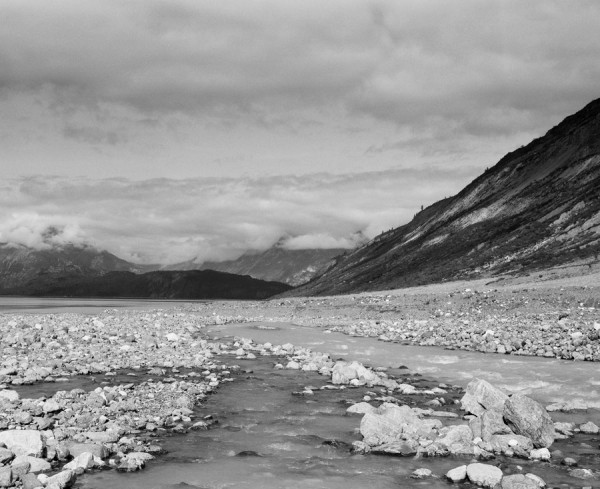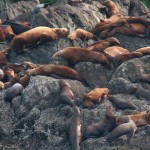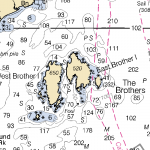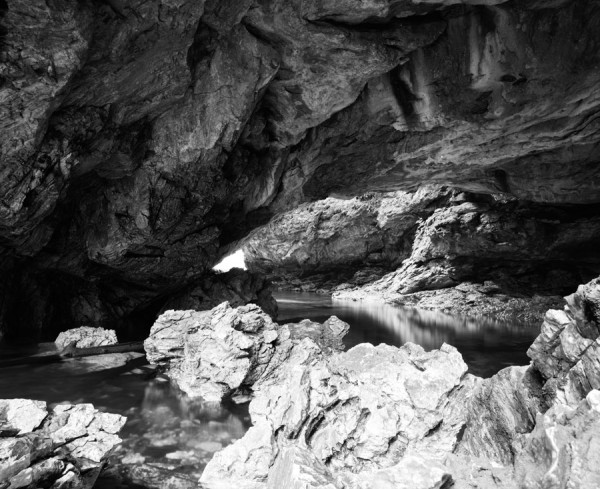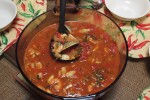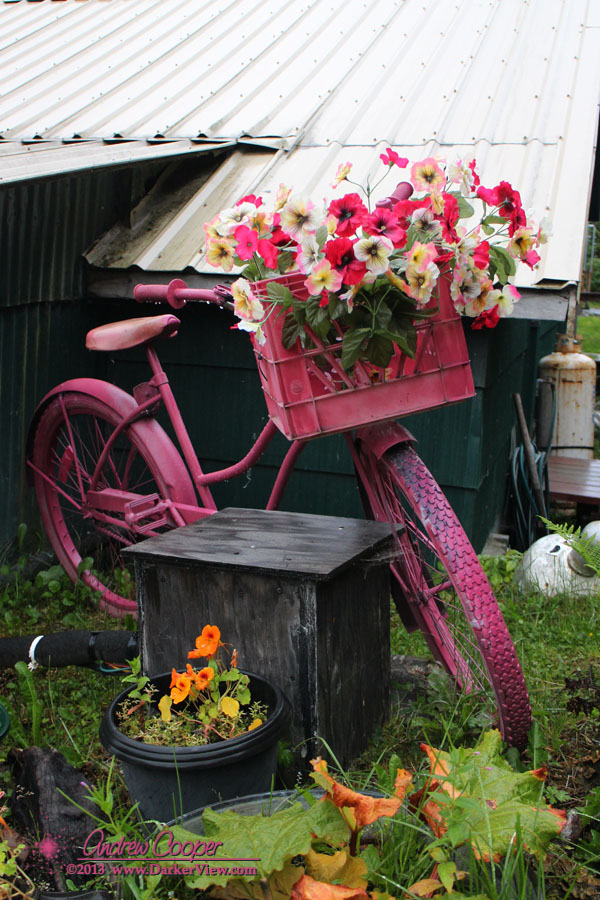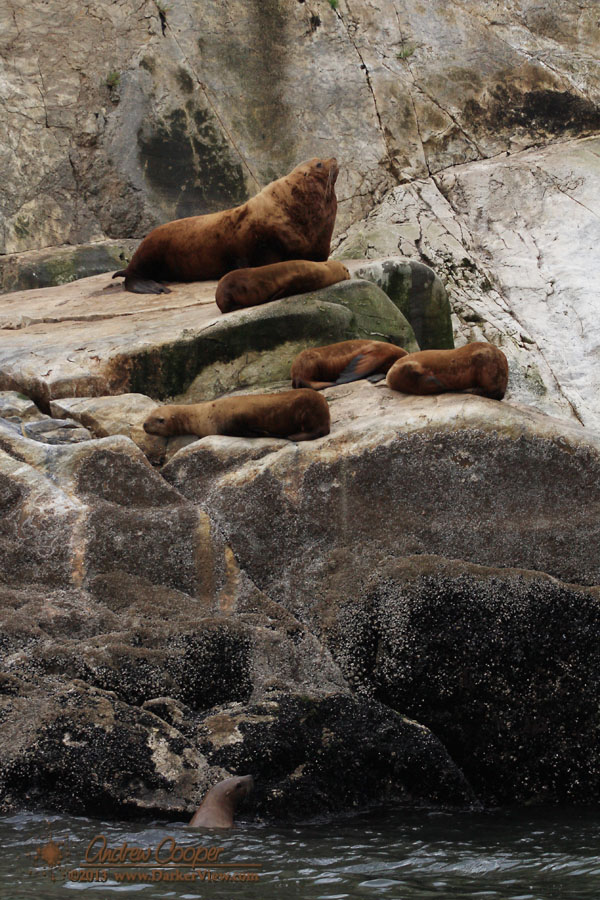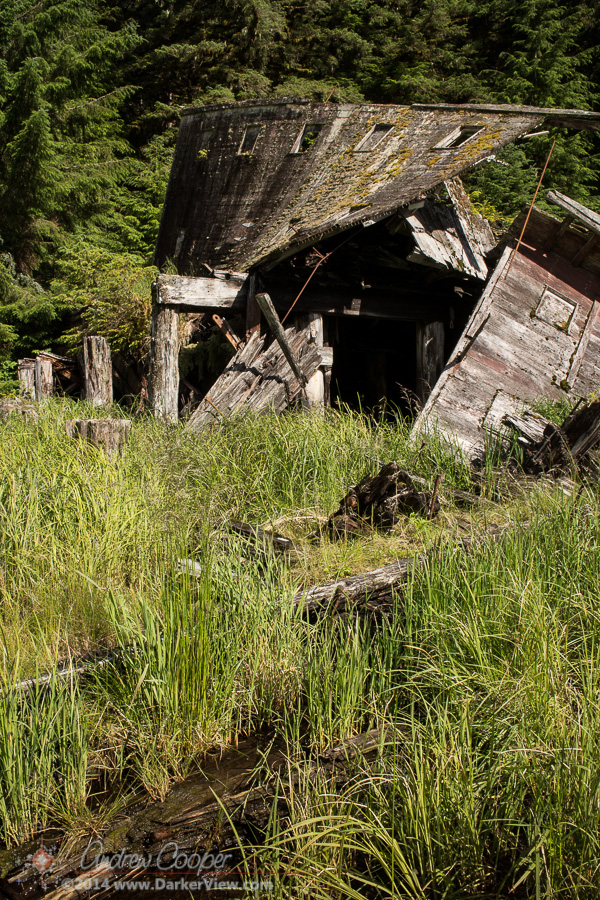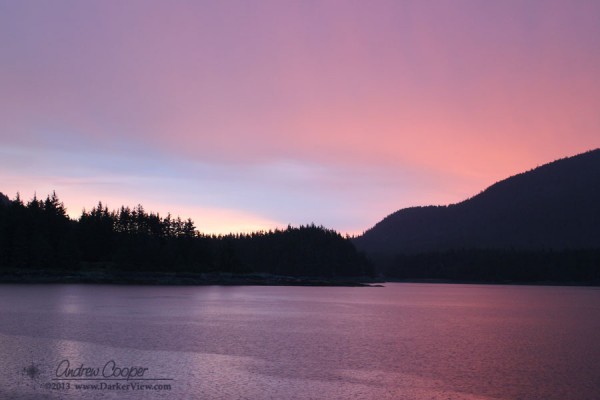Welcome
Blogroll
Legal Matters
All text, photographic and drawn material is the original work of the indicated authors, material is used by permission. Material is copyrighted by their respective authors, all rights reserved.
If you believe that any material here infringes, please contact the webmaster to address the issue.
Please keep comments respectful and avoid profanity or personal attacks. We reserve the right to delete any comments we feel are inappropriate.
Feel free to link to NordicQuest.com. We are selective in our outgoing links. Requests for commercial links or link exchanges are usually ignored.
Photo of the Week – Reid Glacier Outflow
Posted in Photo of the Week, Places
Tagged glacier, Glacier Bay National Park, Reid Glacier
Leave a comment
The Brothers
Just about everyone passes through the area where Stephen’s Passage and Frederick Sound meet. Cruise ships transit this area going to and from Juneau and Skagway. The Alaska Marine Highway ferries plow these waters almost daily. It is also on the main Inside Passage route using Wrangell Narrows. What is all too common with all of these vessels is the fact that they are quickly passing through. Maybe they will choose a heading to take them close to the Five Finger Lighthouse. But there is another spot that I love to take a little time to enjoy–The Brothers.
These are the West Brothers and East Brothers islands near Point Pybus at the southeast corner of Admiralty Island. In the 1930s when fox farming was the third largest industry in Alaska, West Brothers was the site of the Zimmerman Blue Fox Farm with over 400 pair at its breeding height.While the foxes are now ghosts of the island’s past, you will find a very large colony of Stellar sea lions. Because the sea lions use West Brothers nearly year round, you can also spot hunting orca in the vicinity. I once saw orca, humpback whale and sea lion all from a single location just south of the two islands. The channel between the two islands is navigable and very picturesque.
The sea lions are easy to find, the largest haul out is at the southerly tip of West Brother. You will hear the sea lions before you see them. The raucous calls are quite loud, carrying well over the water. Approaching The Brothers one calm and foggy morning we could hear the sea lions over a mile away, long before we could see the islands.A word of caution, the Stellar sea lion is a threatened species and boats should not approach their haul out locations any closer than 100 yards. There are two notable haul out sites, the largest being the rocks at the southerly tip of West Brothers. They also use a pebble beach and adjoining rocks on the northwest side. The southerly site is rumored to have a camera up in the trees; so do obey the rules.
An Alaskan Cioppino
Here is a delicious one-pot meal to serve on a windy and rainy day or any other time you don’t want to spend a lot of time cooking but relish the praise from those you have fed. Many cioppino recipes are pretty much the same but mine has a few additions that even the galley chef will agree give it a marvelous taste. Serves six.
- 2 tablespoons butter
- 1 yellow onion, chopped
- 4 cloves, garlic or 2 teaspoons minced
- 1/2 cup fresh parsley, coarsely chopped
- 1 medium can, stewed tomatoes
- 1 can, tomato paste
- 1 can, chicken broth
- 1 cup, red or white table wine
- ½ cup, water
- 1 bay leaf
- 1 teaspoon, dried basil
- ½ teaspoon, thyme
- ½ teaspoon, oregano
- ½ teaspoon, hot chili pepper
- 1 teaspoon coarse ground pepper
- 12 steamer clams
- ¾ pound, fresh Alaskan halibut, cut into bite size chunks
- ¾ pound, fresh small to medium bay scallops
- ¾ pound, cooked and peeled Tiger shrimp, 16/20 count
- ½ pound, fresh Dungeness crab legs
In a large pot, cook the chopped onions, garlic and parsley in melted butter until the onions are soft. Add the liquid ingredients and spices. Simmer for 30 minutes. Add the seafood and cook for another five minutes or until the clams open. Serve with lots of French bread for dipping in the stock.
2014 SE Alaska Halibut Season
The International Pacific Halibut Commission (IPHC) concluded their meetings today with recommendations to the governments of Canada and the United States for the combined catch limits for 2014 season which was also approved as March 8 – November 7, 2014. The combined catch limit was adjusted slightly from a proposal approved at the interim meeting in December. For Area 2C, which is southeast Alaska, the commercial fishery catch is limited to 3,318,720 pounds and the guided sport fishery to 761,280 pounds. The 2014 guided sport limit is less than last year’s limit but more than the estimated harvest of 723,000 pounds. Non-guided (private) sport catch was estimated at 904,000 pound last year.
Alaska Fish and Game will finalize the 2014 regulations soon. Non-pelagic rockfish sport fishing regulations were announced January 2, 2014. I’ll post a blog on rockfish regulations in February. We’ll be using the Shelton Fish Descender (SFD) on my boat for the first time this year to return rockfish and avoid mortality from barotrauma. Use of a descender device is not mandatory for a private boat but I feel it’s doing something right and sooner or later it will be mandatory for all sport fishermen, not just the guided sport fishery.
Posted in Uncategorized
Leave a comment
Photo of the Week – Harem
Posted in Photo of the Week, Wildlife
Tagged Glacier Bay, Glacier Bay National Park, sea lion
Leave a comment
2014 IPHC Meeting in Seattle
If you did a Google search for Alaska halibut fishing regulations and clicked on the Nordic Quest site, what I am writing about today is simply that the International Pacific Halibut Commission will be meeting all week in Seattle starting Monday, January 13th, and considering catch sharing plans and allocations recommended by the North Pacific Fishery Management Council. There will be some interesting staff reports on the 2013 halibut fishery, and stock assessment but the big issue will be Area by Area harvest decisions and regulatory proposals affecting charter and commercial fishing.
Beginning with the 2014 season, the Catch Sharing Plan (CSP) for Areas 2C and 3A will apply to both the commercial and charter fishery replacing the old Guideline Harvest Level (GHL). At a December 12, 2013 meeting, the North Pacific Fishery Management Council adopted a recommendation for the 2014 season where 18.3% of the CSP would be the charter sport allocation in Area 2C. This is Southeast Alaska waters south and east of Cape Spencer and is the area from Dixon Entrance outside and inside waters up to and including Icy Strait and Cross Sound.
In 2013, the Area 2C commercial halibut catch was slightly over the allowable catch at 3,037,000 pounds and up 12.7% from 2012. For the last nine years charter sport fishing had been subject to a Guideline Harvest Level (GHL). The charter sport fishery in Area 2C landed 723,000 pounds in 2013 which was under the GHL by 65,000 pounds or 8.2%. With the GHL criteria gone for 2014, the charter sport allocation of the combined catch would be 760,00 pounds (net weight). For comparison, the private, or non-guided sport fishery, landed 904,000 pounds in 2013. Private catch was down 7.5% from 2012.
Last year the commission approved for the 2013 season a continuation of the one fish retained limit for charter fishermen with a reverse slot size restriction of less than 45 inches and over 68 inches (U45-O68) with the head on. The 2014 proposal to the IPHC by the NPFMC will be to continue the one fish limit but changing the reverse slot size to U45-O76. The slot size could be adjusted if the charter allocation of the CSP is not being met. Another change that could occur for 2014 is the opportunity for charter operators that possess a commercial quota to transfer a limited quantity to allow their charter customers two fish per day. Presumably in 2014, the non-guided sport fishery will remain at two fish per day, any size. We’ll see. With the 2014 season opening the 1st of February, we’ll know soon.

